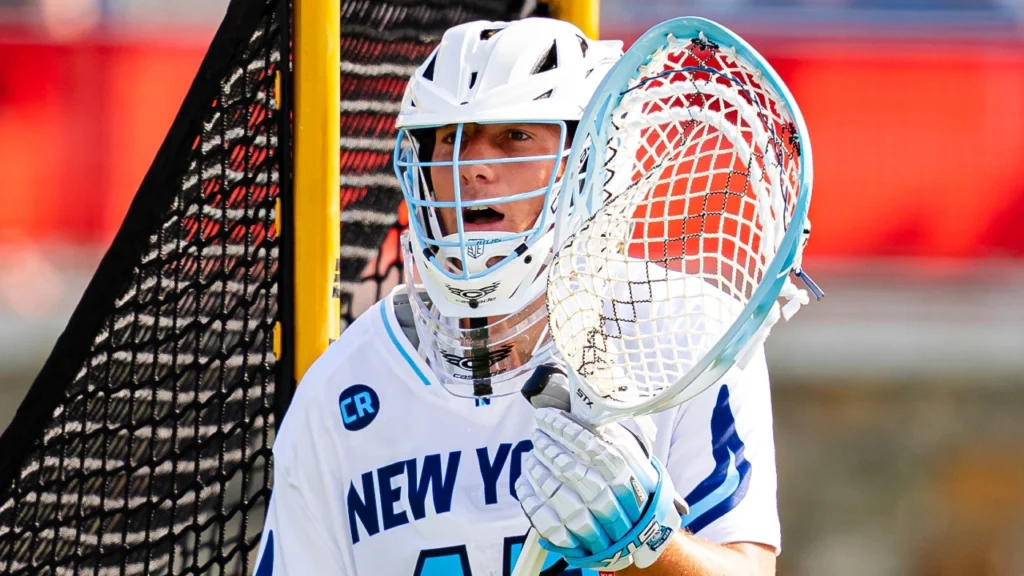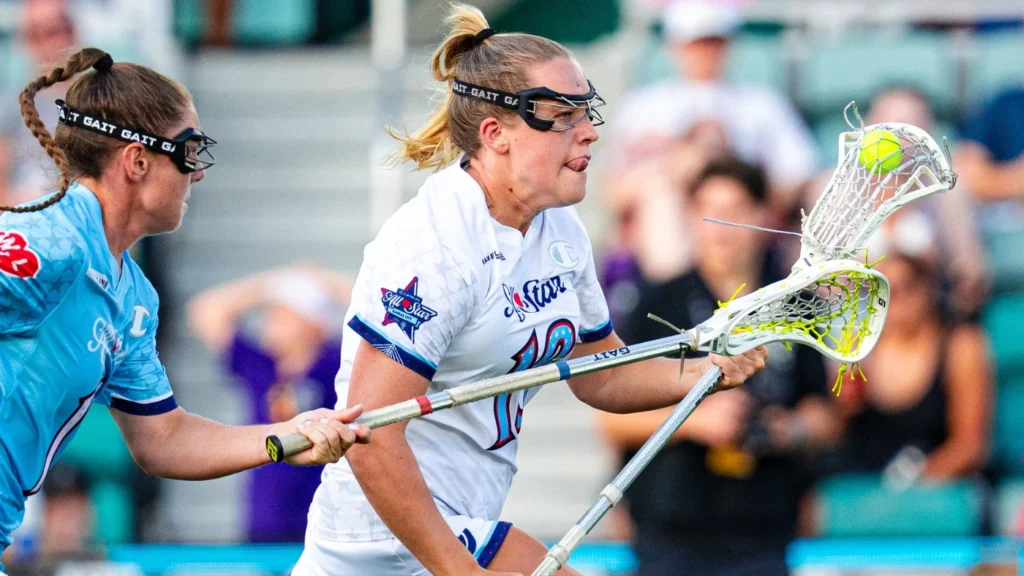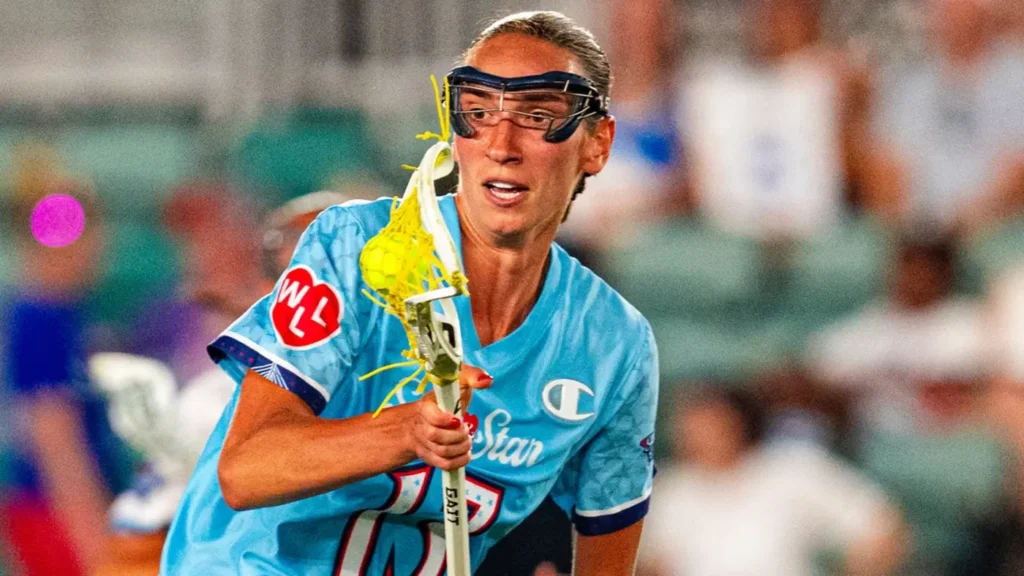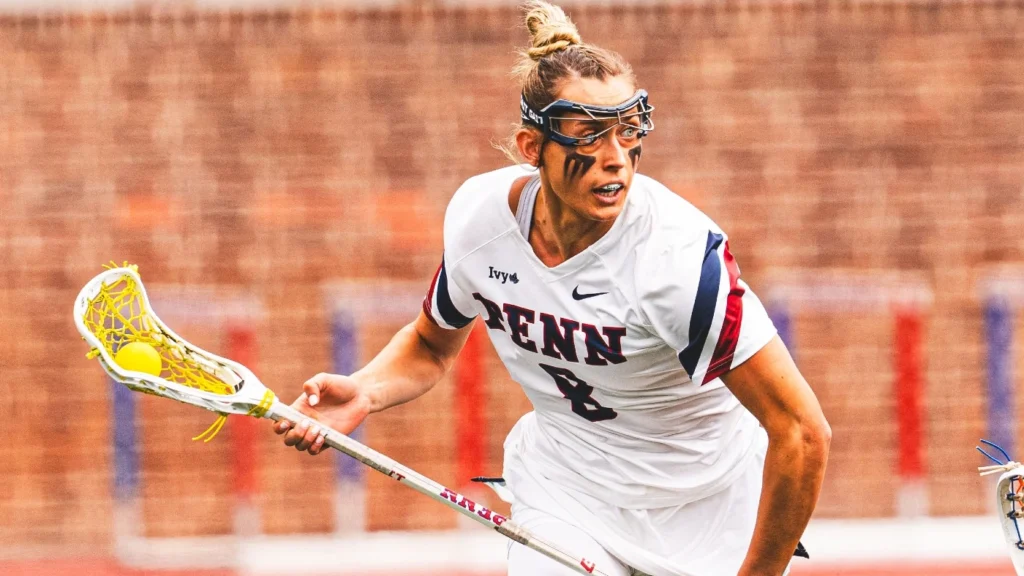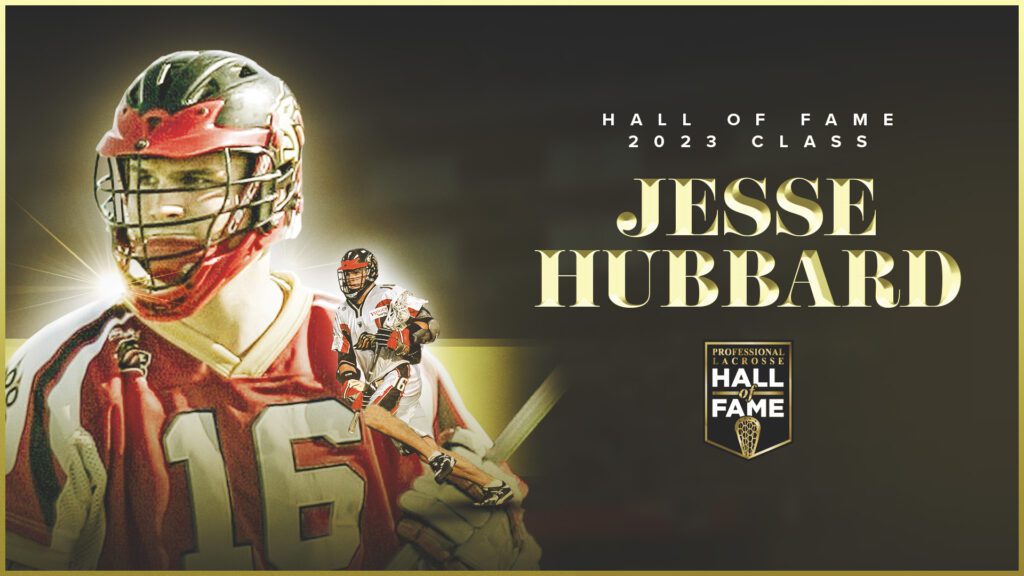
How Jesse Hubbard changed lacrosse as a shooter and Warrior innovator
By Wyatt Miller | Aug 3, 2023
Jesse Hubbard played an eight-year, Hall of Fame career with equipment that he helped create.
Growing up stringing his own leather pocket, Hubbard was a lacrosse guru in every sense of the word. He knew the significance of every string and was constantly fiddling with them. So, when Warrior Sports founder David Morrow saw his extensive knowledge of sticks first-hand on Team USA in 1998, he brought Hubbard in for a meeting.
According to longtime teammate and friend Jon Hess, Morrow laid out everything he had, including some leather pockets. Hubbard picked up the leathers, smelled them, and said “this is stale.” Morrow hired him on the spot and he became the head of product development before the MLL’s inception in 2001.
“He knew every little tiny nuance. He even knew to change suppliers of leathers,” Hess said. “He's a true, absolute student of the game and just pure genius when it comes to the game.”
Over a 9-year period, Hubbard’s name appeared on 61 Warrior patents ranging from sticks to gloves and helmets. Using his own gear, he broke the professional field lacrosse record for goals in a season with a whopping 54 in 2002. After 21 years, that record still stands. So, not only did Hubbard dominate the early years of the MLL, but he also trailblazed the equipment landscape to help grow the game simultaneously.
Hubbard’s knowledge of defenses and body language was just as deep as his understanding of sticks. He knew the tendencies of every player and goalie, just as he did the details of every stick head and pocket.
He recalled how Brian Dougherty would try to bait him into the low corner before moving in for the save as the shot went off. To combat it, he started shooting right at Dougherty in anticipation of the counter. When opponents know each other so well, “it’s a chess match,” Hubbard explained. He used intimate knowledge of his opponents to manipulate space and get good looks almost at will, and more often than not, the passes came from Hess.
“It was actually better to get it through up top to Jesse than it was to try to force feed the crease,” Hess said. “When he had time and room, you knew that you needed to get him that ball and he had a very, very, very good chance of scoring.”
Hess and Hubbard won three national championships together at Princeton before reuniting with the New Jersey Pride years later. And the rapport they built in college transferred over seamlessly. In Hubbard’s record-breaking season, Hess secured 29 assists, and most were to his Princeton teammate. Hess compared the feeder-scorer connection to Archers teammates Grant Ament and Mac O’Keefe, who played together at Penn State.
Hubbard is best-known as the leader of Princeton’s dynasty in the 90s. But what most people don’t realize, according to Hess, is how instrumental he was in the progression of the sport after all that. The MLL was a Warrior-sponsored league, which meant Hubbard was creating and managing equipment in the offseason that the entire league would play with during the summers.
He’d go back-and-forth from China and other foreign countries to check the specs on equipment. Then, about 10 weeks later, that same gear would be laid out in the locker rooms, customized for each team. Sometimes, he’d go straight from practice to an international plane to do business with Warrior.
“It was pretty nerve-wracking when we had to make all the custom equipment for the summer showcase and then the MLL teams,” Hubbard said. “I had just been scrambling to make all that, and then flying in for games and playing. Guys are complaining about it or liking it and I was just trying to get myself ready to play, so there was a lot going on in those early couple years.”
After three seasons, Hess retired, but Hubbard played five more, including one with the Los Angeles Riptide in 2008. And while he never replicated the record-shattering success of that 2002 season, Hubbard scored at least 20 points and 10 goals in all eight MLL seasons, ranking 19th all-time in career goals (225).
Even after a neck injury derailed his final few seasons, Hubbard was a unique scorer and paved the way for future shooters. With unlimited range, purposeful release points and an overpowering shot, Hess said Hubbard “wanted to throw the ball down your throat,” with the same intensity until the end.
“Jesse could get the ball in the cage in any kind of way you could imagine,” said Pride head coach Ted Georgalas. “It’s like the stick was attached to his arm. He was obsessive about his stick. Everything had to be perfect and he was always working on his stick, and obviously it’s important to every lacrosse player, but he took it to another level.”
Hubbard gave fans a sneak peak at the future of the sport as a premium talent and an ambassador of the game. Now, the PLL is filled with athletes that take immense pride in their sticks and have mastered multiple release points.
“I feel like if you looked at my highlights then you'd be like, 'wow that was pretty cool,'” Hubbard laughed. “But if you look at it now, any player that's playing attack at the pro level, it's like, 'that's just what they do.'”
From 2001 until 2008, Hubbard was one of the most successful players in the MLL while running product development for Warrior. He worked on innovating titanium shafts, helmet design, comfort for gloves, stick weight distribution and – most importantly – stick head design.
In the late 90s, he helped finish the Revolution and Evolution sticks before moving onto his own project: the Blade. It was pinched in the back and considered a good ball-handler stick at the time. But years later, it became a frenzy with faceoff specialists, and emerged as the go-to stick at the stripe.
Hubbard spearheaded the Blade and Razer lines after that, tweaking them to fit different needs and positions, before starting on the Finalizer sticks. He also worked on gloves like the Monsoons and RPMs, a wide range of helmets and countless other projects.
In addition to his knowledge of the products, Hubbard contributed with his connection to the players. Constantly interfaced with the best lacrosse players in the world, he could provide valuable player feedback to Morrow, as well as personal input on the gear. Hubbard also knew the younger generation of college players because of his success at Princeton, he said, giving him a broad network of high-level athletes to provide feedback.
As such an important figure in the game, Hess said that everyone revered Hubbard, including a rookie Kyle Harrison on the Riptide. That made getting honest input easy, because the respect that players and coworkers had for him was both on and off the field.
“[Morrow] was basically like ‘I trust you. If you think we should do it, let’s do it,’” Hubbard said. “He was very innovative and he always wanted to come up with new ideas.”
And so they did. Hubbard and Morrow, along with Matthew Winningham and Andrew Maliszewski, launched the next generation of lacrosse equipment, improving everything from head safety to variety in sticks and gloves. Georgalas described those four as the “pioneers” of lacrosse innovation.
“There was a personality to what they were doing and it was, ‘let’s promote the game,’” Georgalas said. “And you can see the result of it 20-something years later.”
The same could be said of Hubbard’s highlight-prone play style, and that’s what made him a Hall of Famer.

